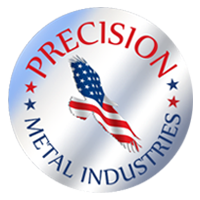In joining situations that require a bond between different metals with significant strength, brazing offers an ideal solution. Unlike welding, the work pieces are not altered or melted in any way. Unlike soldering, the filler metal flows into the gap between fitted parts via capillary action, producing a closer, stronger joint.
What Is Brazing?
The strongest, highest-quality brazed joints begin with close-fitting parts, clean base metals, and oxide-free surfaces.
A filler metal is heated to a high point — above its melting temperature — with the protection of a flux, so that it can be used to flow through the work pieces easily. This process, called wetting, fills the gap between the parts first with the protective flux, then the specialized filler alloy. The assembly then cools to form the bond.
The Torch Brazing Process
The most common mechanized brazing method, torch brazing is an ideal fit for small production volumes, specialized operations, and hard-to-reach applications that require a manual touch or expert craftsman’s eye. It is known for its versatility and ability to produce consistent, high-quality connections.
Torch brazing, as the name implies, employs a hot gas torch on or near a joint to heat the workpieces and melt the filler alloy being used to fill the gap. Because the filler materials chosen should melt significantly below the workpieces’ oxidizing temperature, the joint is protected from oxidization.
There are three types of torch brazing:
- Manual — This method uses a hand-held or fixed position torch. It’s the most labor-intensive form of torch brazing and requires the most human skill, but is also the most versatile for unusual, hard-to-access, and specialty applications. It’s best for small production.
- Machine — Mixing the automatic style and manual style processes, this style of torch brazing is excellent for repetitive braze processes. An operator controls the placement of the braze materials and the jigging of the joint’s parts, but the actual torch operation is handled by an automated machine for consistency and speed.
- Automatic — The torch brazing process is fully mechanized with automatic machines — operators simply load and unload the parts. This method has a higher production rate and uniform quality, but is less versatile for specialty work.
Most metals can be torch brazed, with the exception of titanium, zirconium, and particular types of stainless steel. Brazing copper and brazing aluminum are both common manufacturing practices.
Brazing Rods and Materials
An essential ingredient in any brazing process, filler metals and specialty alloys come preformed or packaged in brazing rods, ribbons, pastes, wires, and even powders or creams, depending upon the application.
Filler alloys are usually made up of a combination of at least three metals, carefully combined for their desired properties, specifically:
- The ability and efficacy of wetting the base metal parts
- The ability to stand up to the conditions required for the process and finished part
- Possessing a lower melting point than the base metal or, in special instances, a very particular melting point chosen for the project’s unique needs
Braze alloys come in several unique families, and most are made up in trifoils of laminated metal. The center metal in these rods is most often copper, which efficiently carries the alloy that is layered on each side of it in the rod. Copper is also useful in providing a barrier for materials and mechanical stress. Other common filler metals include:
- Aluminum-silicon
- Copper-silver
- Brass
- Bronze
- Gold-silver
- Nickel alloys
- Silver
Contact the team today to see how PMI can supply the torch brazing and fabrication needs for your next project.




